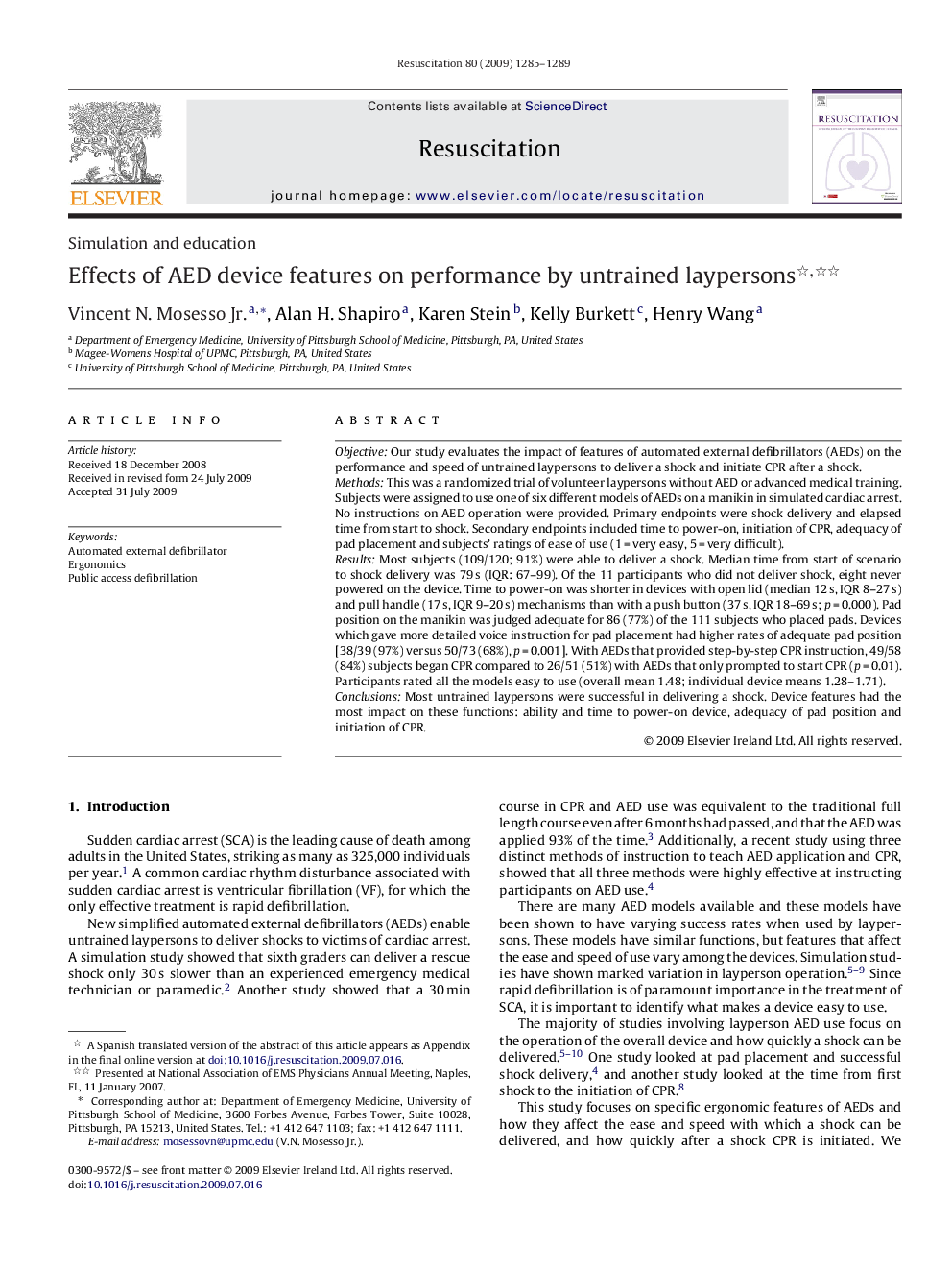| کد مقاله | کد نشریه | سال انتشار | مقاله انگلیسی | نسخه تمام متن |
|---|---|---|---|---|
| 3010263 | 1181508 | 2009 | 5 صفحه PDF | دانلود رایگان |

ObjectiveOur study evaluates the impact of features of automated external defibrillators (AEDs) on the performance and speed of untrained laypersons to deliver a shock and initiate CPR after a shock.MethodsThis was a randomized trial of volunteer laypersons without AED or advanced medical training. Subjects were assigned to use one of six different models of AEDs on a manikin in simulated cardiac arrest. No instructions on AED operation were provided. Primary endpoints were shock delivery and elapsed time from start to shock. Secondary endpoints included time to power-on, initiation of CPR, adequacy of pad placement and subjects’ ratings of ease of use (1 = very easy, 5 = very difficult).ResultsMost subjects (109/120; 91%) were able to deliver a shock. Median time from start of scenario to shock delivery was 79 s (IQR: 67–99). Of the 11 participants who did not deliver shock, eight never powered on the device. Time to power-on was shorter in devices with open lid (median 12 s, IQR 8–27 s) and pull handle (17 s, IQR 9–20 s) mechanisms than with a push button (37 s, IQR 18–69 s; p = 0.000). Pad position on the manikin was judged adequate for 86 (77%) of the 111 subjects who placed pads. Devices which gave more detailed voice instruction for pad placement had higher rates of adequate pad position [38/39 (97%) versus 50/73 (68%), p = 0.001]. With AEDs that provided step-by-step CPR instruction, 49/58 (84%) subjects began CPR compared to 26/51 (51%) with AEDs that only prompted to start CPR (p = 0.01). Participants rated all the models easy to use (overall mean 1.48; individual device means 1.28–1.71).ConclusionsMost untrained laypersons were successful in delivering a shock. Device features had the most impact on these functions: ability and time to power-on device, adequacy of pad position and initiation of CPR.
Journal: Resuscitation - Volume 80, Issue 11, November 2009, Pages 1285–1289